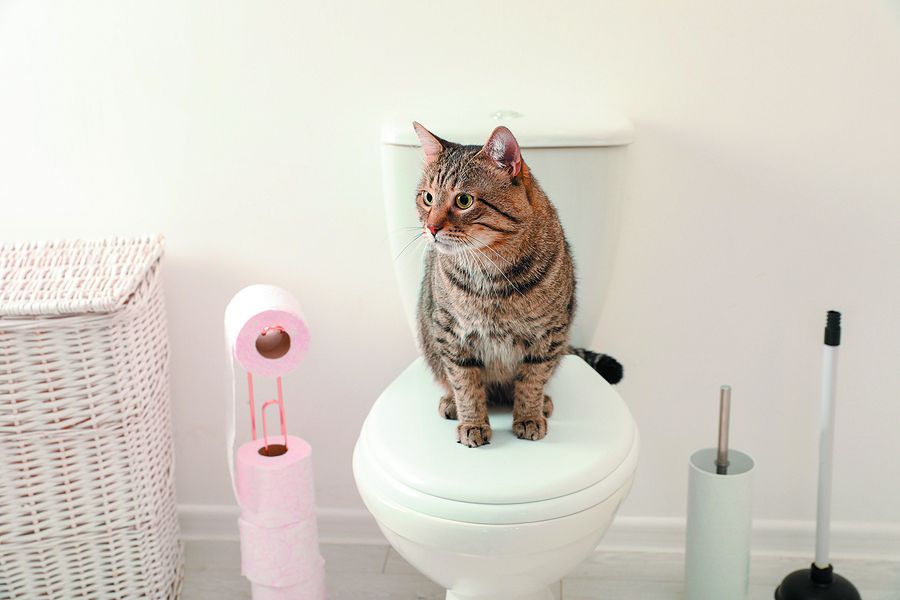Avoid Clogs and Damage: Don't Flush Cat Poop Down Your Toilet - Expert Recommendations
Avoid Clogs and Damage: Don't Flush Cat Poop Down Your Toilet - Expert Recommendations
Blog Article
Have you been on the lookout for info Can You Flush Cat Poop Down The Toilet??

Intro
As cat proprietors, it's vital to bear in mind just how we dispose of our feline pals' waste. While it may appear convenient to purge cat poop down the bathroom, this practice can have damaging repercussions for both the setting and human health and wellness.
Ecological Impact
Flushing feline poop presents harmful microorganisms and bloodsuckers right into the water supply, positioning a considerable threat to marine ecosystems. These contaminants can negatively affect marine life and compromise water high quality.
Health and wellness Risks
In addition to environmental issues, flushing cat waste can also pose health threats to human beings. Feline feces may consist of Toxoplasma gondii, a parasite that can create toxoplasmosis-- a possibly extreme ailment, specifically for expectant females and people with weakened immune systems.
Alternatives to Flushing
Thankfully, there are safer and more responsible ways to take care of pet cat poop. Think about the adhering to options:
1. Scoop and Dispose in Trash
The most common method of getting rid of feline poop is to scoop it right into an eco-friendly bag and toss it in the trash. Make sure to utilize a specialized trash scoop and get rid of the waste promptly.
2. Usage Biodegradable Litter
Choose naturally degradable feline litter made from materials such as corn or wheat. These clutters are eco-friendly and can be safely taken care of in the trash.
3. Hide in the Yard
If you have a lawn, think about hiding feline waste in an assigned area away from vegetable yards and water resources. Make sure to dig deep sufficient to prevent contamination of groundwater.
4. Install a Pet Waste Disposal System
Buy a pet dog garbage disposal system particularly designed for pet cat waste. These systems utilize enzymes to break down the waste, decreasing smell and environmental influence.
Final thought
Responsible family pet ownership prolongs past supplying food and shelter-- it also entails appropriate waste management. By avoiding flushing cat poop down the commode and choosing different disposal techniques, we can minimize our ecological footprint and shield human health and wellness.
Why Can’t I Flush Cat Poop?
It Spreads a Parasite
Cats are frequently infected with a parasite called toxoplasma gondii. The parasite causes an infection called toxoplasmosis. It is usually harmless to cats. The parasite only uses cat poop as a host for its eggs. Otherwise, the cat’s immune system usually keeps the infection at low enough levels to maintain its own health. But it does not stop the develop of eggs. These eggs are tiny and surprisingly tough. They may survive for a year before they begin to grow. But that’s the problem.
Our wastewater system is not designed to deal with toxoplasmosis eggs. Instead, most eggs will flush from your toilet into sewers and wastewater management plants. After the sewage is treated for many other harmful things in it, it is typically released into local rivers, lakes, or oceans. Here, the toxoplasmosis eggs can find new hosts, including starfish, crabs, otters, and many other wildlife. For many, this is a significant risk to their health. Toxoplasmosis can also end up infecting water sources that are important for agriculture, which means our deer, pigs, and sheep can get infected too.
Is There Risk to Humans?
There can be a risk to human life from flushing cat poop down the toilet. If you do so, the parasites from your cat’s poop can end up in shellfish, game animals, or livestock. If this meat is then served raw or undercooked, the people who eat it can get sick.
In fact, according to the CDC, 40 million people in the United States are infected with toxoplasma gondii. They get it from exposure to infected seafood, or from some kind of cat poop contamination, like drinking from a stream that is contaminated or touching anything that has come into contact with cat poop. That includes just cleaning a cat litter box.
Most people who get infected with these parasites will not develop any symptoms. However, for pregnant women or for those with compromised immune systems, the parasite can cause severe health problems.
How to Handle Cat Poop
The best way to handle cat poop is actually to clean the box more often. The eggs that the parasite sheds will not become active until one to five days after the cat poops. That means that if you clean daily, you’re much less likely to come into direct contact with infectious eggs.
That said, always dispose of cat poop in the garbage and not down the toilet. Wash your hands before and after you clean the litter box, and bring the bag of poop right outside to your garbage bins.
https://trenchlesssolutionsusa.com/why-cant-i-flush-cat-poop/
We had been shown that report on How to Dispose of Cat Poop and Litter Without Plastic Bags from a good friend on another web page. Don't hesitate to take the opportunity to distribute this write-up if you appreciated it. Thanks a lot for going through it.
Call Today Report this page